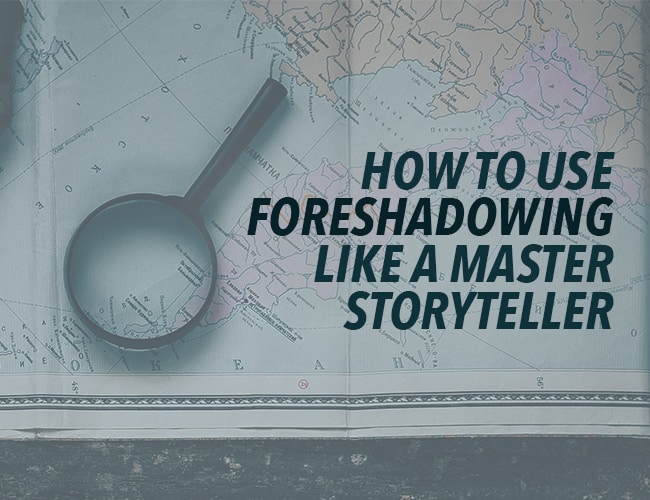Foreshadowing is a task writers have to approach with the same careful precision they use when threading a needle. It’s not always easy, but when done right, you’re in business. Hinting at a future revelation is necessary for authors of mystery novels, for example, but it’s useful for all writers looking to include a killer twist—no pun intended. Not sure how to use foreshadowing? Not to worry — today we’re covering techniques you can use to thread that needle.

2 Ways to Use Foreshadowing Like a Master
Foreshadowing is a delicate balancing act. You have to toe the line between throwing a random plot twist into your story and making the surprise too predictable for the reader. The trick is to leave a trail of bread crumbs. Here are two techniques you can try for how to use foreshadowing:
1. Drop hints
At first glance, it may seem like a near-impossible task to communicate to your reader that whatever you’re mentioning is going to be important later. How will they know what to look for? After all, there are so many elements to a story, some of which won’t matter at all for your twists.
Is there something significant about that green dress the heroine wears in chapter four? Does it matter that the neighbor walks his dog at three o’clock every day? Luckily, there are a couple of useful ways to clue your reader into the fact that something is important.
This is one of those ways.
See what I did there? By setting that sentence apart from the rest of these paragraphs, I made you pay attention. Now, all of a sudden, you had to insert a pause before and after those few words.
If something critical happens in your story that is going to come up again later, make sure it stands out in the crowd. Start a new paragraph, insert a break in your chapter, whatever you have to do.
A simple formatting technique can make things a little too easy, though. If your hints are hammered into the reader’s head instead of being gently dropped, the magic and mystery vanishes. Decide if there is a better way to get your point across.
2. Repetition is key
Repetition is another trick you can use to send your reader the mental message that they should be paying attention. Think of this as the technique teachers use in their classes. Though some might say, “Write this down; it’s important,” all most teachers have to do is repeat a certain point in various ways throughout the class and their students will make sure that information is in their notes.
Don’t tell your reader to “write this down,” but do rephrase and repeat the key points of your plot.
For example, in one of my sci-fi stories, two of my characters have different habits when it comes to how they put their coats away when they get home: Astrid always tosses her coat across the back of the couch and Dawn always hangs hers up. Every time Dawn and Astrid return to their apartment, I make sure to point out in some way that Dawn’s coat ends up on her hook and Astrid’s is tossed aside.
Later on in the story, Dawn is kidnapped and replaced by a doppelgänger. Though I don’t come right out and say it, it’s obvious that Astrid becomes suspicious of “Dawn.” Why? She doesn’t hang up her coat. It ends up thrown onto the couch along with Astrid’s.
This clue is essential to figuring out that “Dawn” is not who she claims to be, and if the reader is as perceptive as Astrid is, they’ll pick up on that.
Walking the Tightrope
Like with every aspect of writing, foreshadowing gets easier with a little bit (or, I should say, a lot) of practice.
Write with the mindset of a reader. Try to think how you would react to your own story. Is it too easy to figure out? Too out of the blue?
You’ll know what feels right in the end.
Do you have more suggestions for how to use foreshadowing? How do you approach your plot twists? Let us know in the comments!
PRACTICE
Foreshadowing takes a lot of time and set up, so make your plot twists a little easier on yourself by writing a brief outline for your “grand reveal.” Take fifteen minutes to prepare for foreshadowing in your story.
First, figure out what your big surprise is going to be in your story. Once you’ve decided on that, decide how you’re going to leave clues along the way, all the way from your first page to the last one. Finally, set milestones for yourself so you have some direction.
When you’ve finished, leave your practice in the comments, if you’d like. Be sure to give your fellow writers some feedback, too. Have fun!
The post How to Use Foreshadowing Like a Master Storyteller appeared first on The Write Practice.
from The Write Practice http://ift.tt/2BufQgS
No comments:
Post a Comment